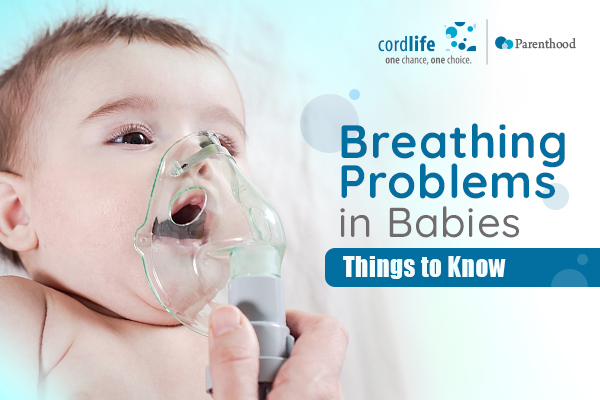Table of Contents
Breathing problems in babies are more common than we imagine. Most babies suffer from temporary respiratory illnesses caused by varied factors during the first two years. However, some babies have more complex breathing disorders that are either congenital or environmental.
Common Breathing Problems in Babies
Numerous things can cause breathing problems in babies. Some of the most common illnesses that cause breathing problems are:
Common Cold
No child has not suffered from the common cold. The common symptoms of common cold include blocked nose, sore throat, runny nose, and breathing distress. Common cold can be treated with home remedies and usually goes away on its own in a few days.
Allergies
Babies often suffer from breathing difficulties due to allergies. Babies suffer from a stuffed nose, sneezing, and red eyes due to allergies. The most common causes of allergies in babies are pollens, dust, mites, cat fur etc. Allergies usually affect the upper respiratory tract.
Flu or Influenza
Flu symptoms are similar to the common cold and are transmitted through a cough or sneeze droplets from one person to the other. Flu doesn’t cause much damage to healthy people. However, if the baby develops severe breathing distress it is better to visit the hospital. The best way to prevent flu is by taking flu vaccines.
Asthma
Babies who are prone to allergies are at high risk of asthma. This is a chronic condition that affects the lungs. Asthma can cause severe breathing distress, coughing, wheezing, and tightness of the chest. Asthma can be a long-lasting disease. However, there are ways to control asthma attacks. Many kids outgrow asthma during their teenage years.
Pneumonia
Respiratory distress is a symptom of pneumonia. In this, the bacteria Streptococcus pneumoniae (pneumococcus) infects the lung airways and causes inflammation. It also causes fluid accumulation in the lungs thus, blocking the airways. If not treated properly, pneumonia can be fatal in babies. Broad-spectrum antibiotics are used to treat pneumonia. Children are often put under oxygen support to reduce breathing distress.
Bronchiolitis
This is caused by the respiratory syncytial virus (RSV). It is believed that 90% of children get affected by RSV in the first two years of their lives. Severe wheezing, runny nose, rapid breathing, coughing, and high fever are the major symptoms of this disease. The coughing and wheezing last for more than two weeks. Children can also develop ear infections due to bronchiolitis.
What To Do When the Baby is Suffering Breathing Problems?
- Keep the baby hydrated
- Place the child in a comfortable sitting position to relieve breathing distress
- Encourage the child to inhale vapor or give a warm bath to moisten the mucus
- Do not smoke a cigarette in front of the distressed child
- Give paracetamol or ibuprofen to control fever
Warning Signs
Immediately visit the doctor if one of the symptoms appears.
- High fever
- Vomiting
- Drowsiness
- Loss of appetite
- Fainting
- Skin turning pale or blue
- Blood in mucus
- High pitched sound while breathing
- Gasping
- Child becomes unresponsive
Conclusion
Most babies suffer from breathing difficulties during fever and cold. Usually, it goes away on its own. However, breathing difficulties can be an indication of more severe diseases such as asthma, sleep apnea, pneumonia, or cystic fibrosis.
